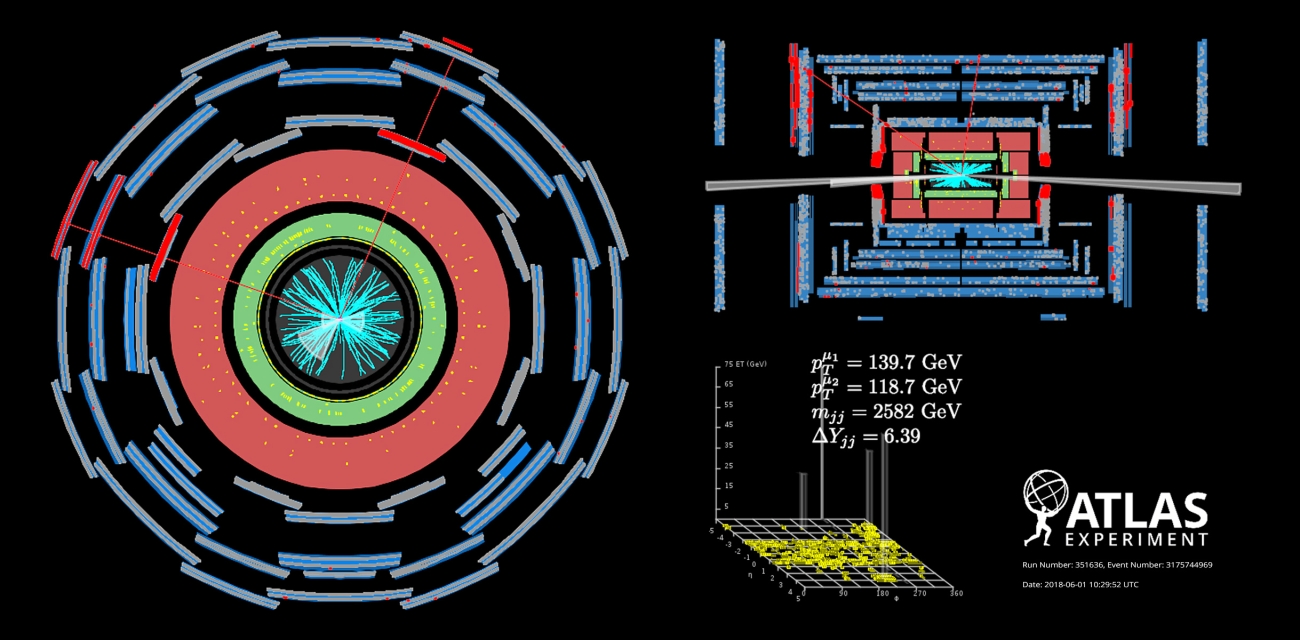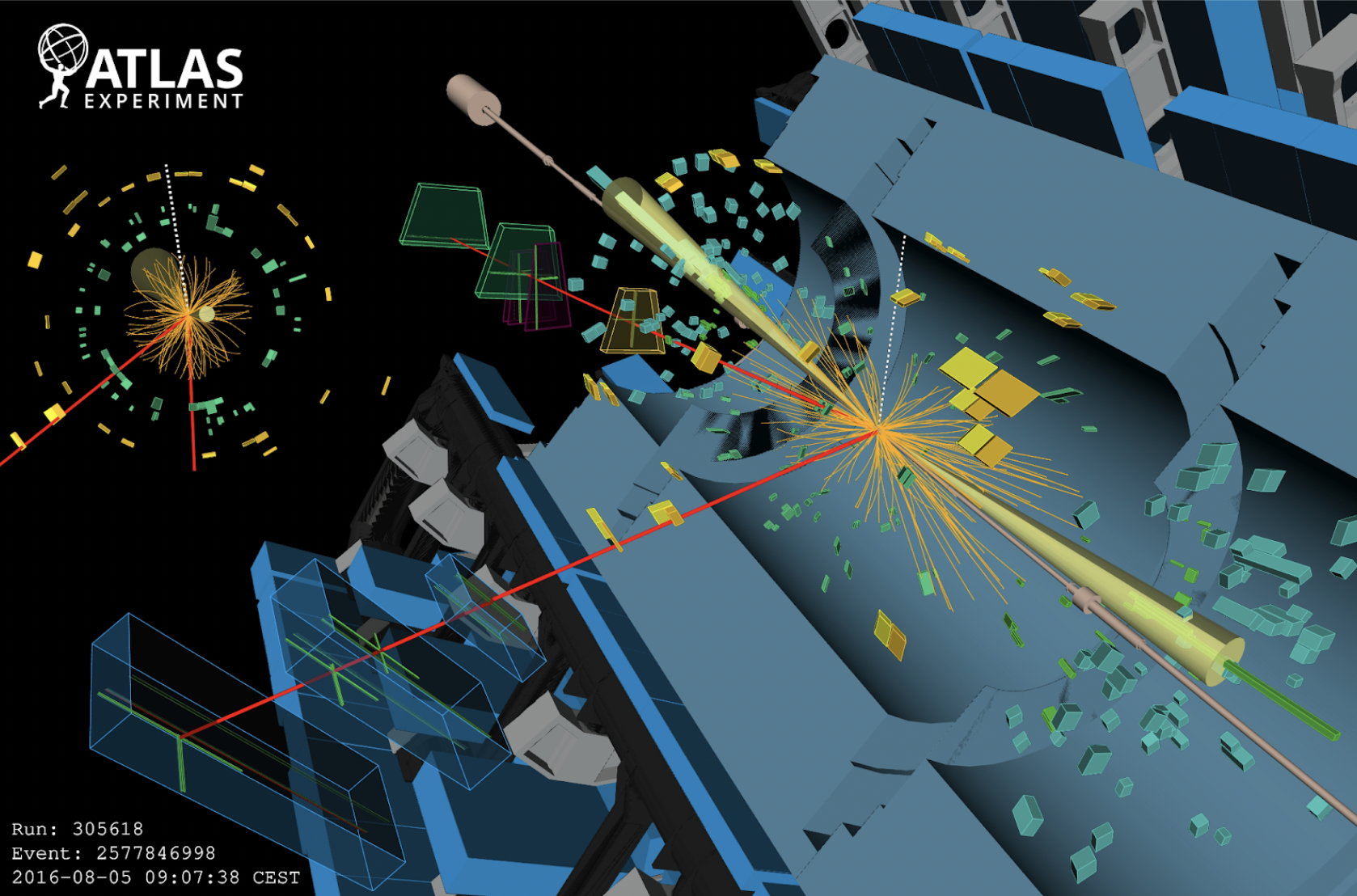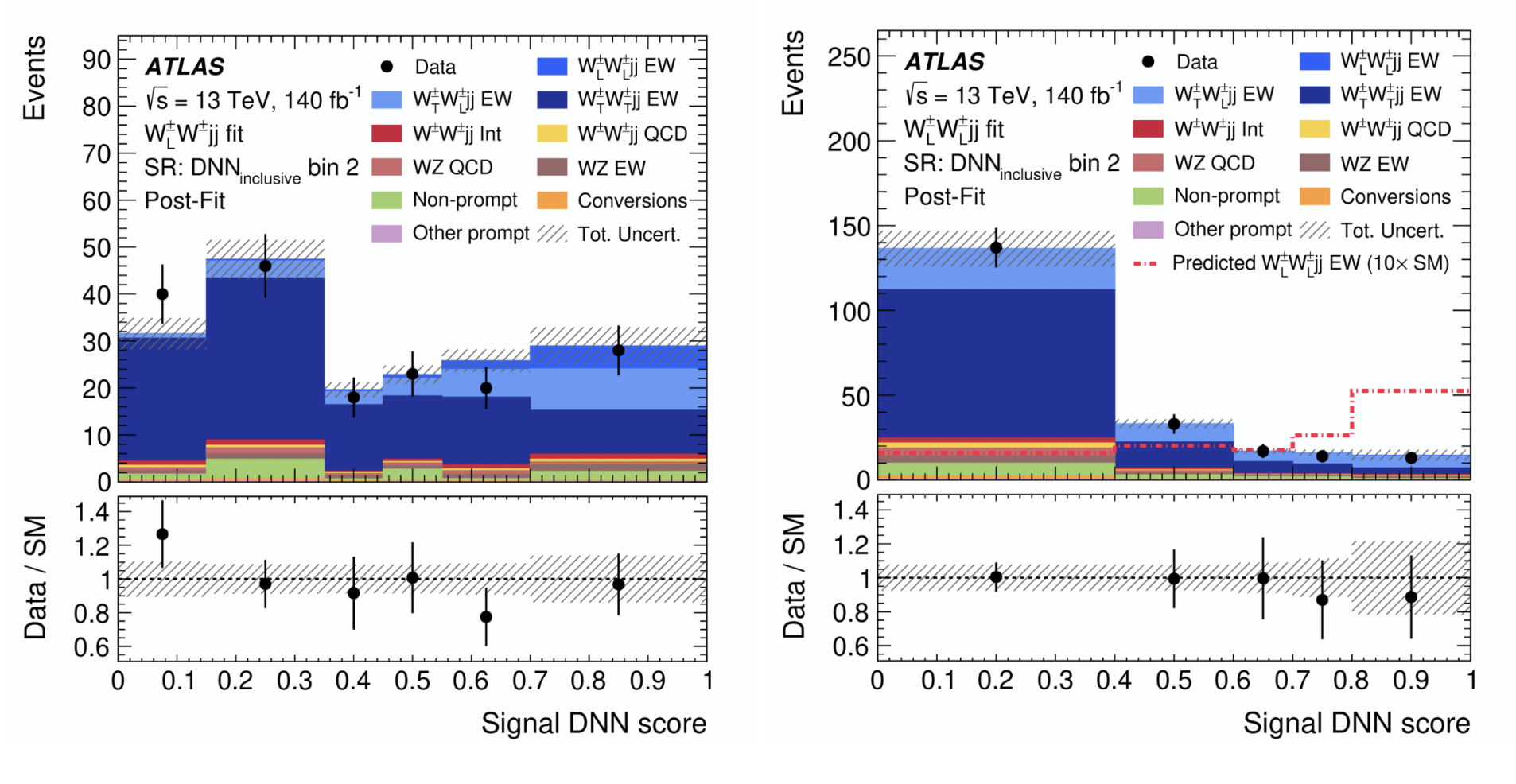ATLAS Approaching a Breakthrough in Diboson Polarization with Run-3 Data

The study of the polarisation of vector boson scattering (VBS) processes provides a unique test of the Higgs mechanism’s role in taming high-energy electroweak interactions, making it indispensable for fundamental physics for the last decades. As the LHC enters its Run-3 phase, this study is poised for a major breakthrough. After years of laying the groundwork with early measurements, researchers are now transitioning into a precision era.
With larger datasets and refined analysis techniques, physicists can rigorously test quantum field theory predictions within the Standard Model, probe the mechanism of electroweak spontaneous symmetry breaking with unprecedented depth, and search for subtle deviations that might hint at physics beyond the current theoretical framework. At the same time, these studies are opening new interdisciplinary connections, with methods and ideas that intersect fields such as quantum information science.

Representative Feynman diagrams for a VBS EW W±W±jj production that either include (a) triple-gauge-boson vertices, (b) a quartic gauge boson vertex, or (c) the exchange of a Higgs boson.
Central to this endeavour is the exploration of the longitudinal polarisation mode in vector boson scattering. Longitudinal vector bosons – those whose spin aligns along the direction of motion – are a direct manifestation of the electroweak symmetry breaking (EWSB) mechanism, because the scalar Goldstone bosons from symmetry breaking endow the mass and longitudinal mode of W and Z bosons. The VBS processes have three production mechanisms: the self-interaction of weak bosons through quartic vertices, Higgs-mediated scattering processes directly tied to the electroweak symmetry breaking (EWSB), and potential anomalous interactions predicted by beyond-Standard-Model theories. Each leaves distinct fingerprints in the polarisation landscape. Without the coupling between the Higgs boson and longitudinal vector boson pairs, scattering amplitudes would grow rapidly with energy, eventually violating unitarity at the TeV scale. Observing and characterising these longitudinally polarised interactions, therefore, serves as a crucial test of the Standard Model and offers one of the most direct windows onto the physics of the Higgs sector.
Recent analyses of the full Run 2 dataset (140 fb⁻¹) have transformed this theoretical imperative into experimental reality and delivered important milestones. Through innovative deployment of experimental techniques, the ATLAS Collaboration has achieved a 3.3σ evidence of longitudinally polarised same-sign W boson scattering, as well as established the tightest constraints to date on doubly longitudinal WW scattering cross-sections. ATLAS’s evidence for the longitudinally polarised state in VBS provides the first experimental confirmation of Higgs-mediated amplitude cancellation. The cross-sections for different polarisation modes are measured and compared to the SM prediction, and no excess is observed. Besides, the results of the di-longitudinal measurement are sufficiently capable in constraining new physics models related to effective field theory or anomalous coupling, serving as a key component of our follow-up work.

Visualization of one of the candidate events in the signal region dominated with events with at least one longitudinally polarised W. The red tracks are the tracks of two reconstructed muons and the yellow cones illustrate particle jets. The length of the jet cones is proportional to their energy. The dashed white line indicates the transverse missing energy associated with the two neutrinos in the final state.
These breakthroughs required overcoming formidable technical challenges. The polarisation state of W bosons manifests in the decay angles of their leptonic decays (W→ℓν), yet the characteristic VBS signature, leptons accompanied by widely separated jets, illustrate the polarisation information within subtle angular correlations and kinematic distributions. However, the “silent” escape of neutrinos complicates full event reconstruction, while the extreme rarity of doubly longitudinal WW events (constituting barely 10% of signals) demands unprecedented background suppression.
To address this, researchers developed specialized Deep Neural Network (DNN) architectures capable of disentangling polarisation states with 90% accuracy, distinguishing between signal and backgrounds, and among scenarios where both, only one, or neither W bosons exhibit longitudinal polarisation. In addition, the state-of-the-art prediction from Sherpa3 is used in the VBS polarisation modelling in order to achieve next-to-leading-order (NLO) QCD accuracy. Together with the theoretically calculated NLO EW correction, the related systematic uncertainty is reduced by a factor of four, and the statistical uncertainty becomes the dominant source of uncertainty. This achievement also highlights the potential of incorporating new data from Run 3 and the HL-LHC.

Distributions of signal DNN score distinguishing the same-sign WW signal with at least one longitudinally polarised W boson (left) and the same-sign WW signal with both W bosons longitudinally polarised (right) in the VBS enriched region. The predicted yields are shown. The shaded area surrounding the expectation represents the total uncertainties in the predicted yields. The ratios of the observed yields to the total Standard Model predictions are shown by the points in the bottom panels. The dashed line (right) shows the Standard Model prediction of the doubly longitudinal contribution multiplied by a factor of 10.
Looking ahead, the growing Run-3 dataset is expected to significantly enhance the precision of these measurements. With improved detector performance, more sophisticated analysis methods, and the accumulation of a larger number of rare scattering events, physicists aim not only to solidify these early observations but also to explore the full structure of vector boson polarisation, including potential anomalous effects predicted by extensions of the Standard Model.
The coming years will thus be crucial in advancing our understanding of the electroweak sector and in searching for possible new physics that emerges through subtle distortions in these fundamental processes. The field stands at an exciting crossroads. Thanks to the remarkable performance of the LHC and its experiments, what once seemed a distant theoretical ambition is now firmly within reach. With continued effort and ingenuity, the coming seasons of research may bring about a true breakthrough in our grasp of the forces that shape the universe. As datasets grow and analysis frameworks evolve, the LHC’s exploration of this quantum-encoded “polarisation frontier” promises to redefine our understanding of matter’s fundamental interactions.
Note from the editors: For more information you can watch Tairan's Xu recent EP seminar: HERE.
